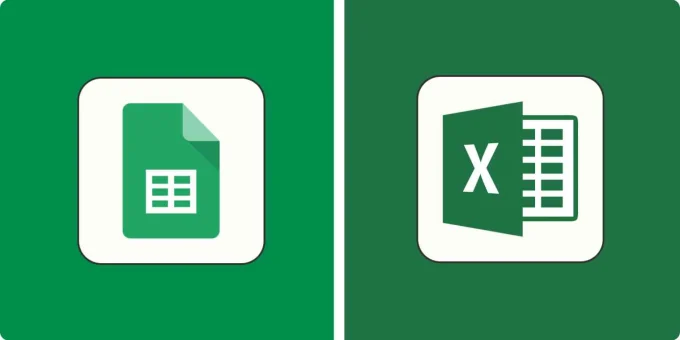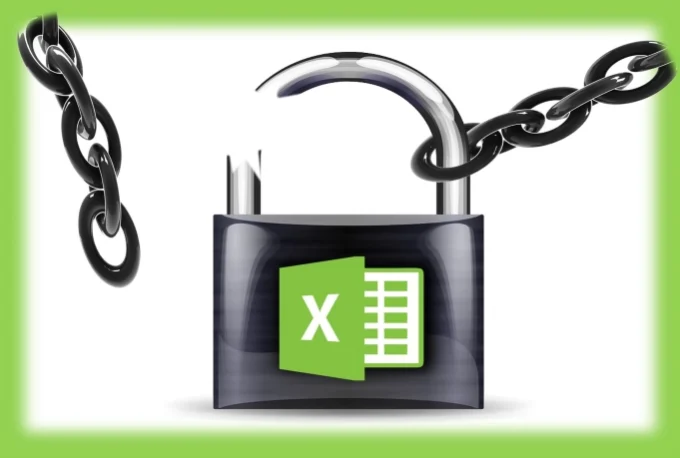Simple Steps to Lock Excel Files and Prevent Unauthorized Edits
Data security is more important than ever. If it’s personal information or sensitive business data, keeping it safe from unauthorized access and edits is a priority. One tool that is widely used for data management is Microsoft Excel. However, many users are unaware of the risks associated with leaving their Excel files unprotected. So lets explore the importance of Excel file protection and provide you with a step-by-step guide on how to lock your Excel files to prevent unauthorized edits.
Understanding the Importance of Excel File Protection
Excel files contain a wealth of valuable data, ranging from financial records and customer information to important business plans and strategies. If these files fall into the wrong hands, the consequences can be severe. Unauthorized access to sensitive data can lead to financial loss, privacy breaches, and damage to your reputation.
By implementing Excel file protection measures, you can significantly reduce the risk of unauthorized access and prevent unwanted edits. Locking your Excel files ensures that only authorized individuals can make changes, providing an additional layer of security for your data.
The Risks of Unprotected Excel Files
Leaving your Excel files unprotected can have dire consequences. Without password protection, anyone who has access to the file can open it and modify its contents. This opens the door for malicious activities, such as unauthorized data alterations, insertions, or deletions.
Additionally, unprotected Excel files are vulnerable to malware and viruses. It only takes one infected file to compromise the security of your entire system, putting all your data at risk.
If you share Excel files with colleagues or collaborators, leaving them unprotected can result in accidental or intentional changes that can disrupt data integrity and accuracy.

Benefits of Locking Your Excel Files
Locking your Excel files provides several benefits, including:
- Data Integrity: By preventing unauthorized modifications, you can ensure that your data maintains its integrity and accuracy.
- Data Privacy: Locking Excel files protects sensitive information from prying eyes, ensuring that only authorized individuals can access it.
- Version Control: By having control over who can make changes to your Excel files, you can maintain proper version control and track modifications.
- Peace of Mind: Locking your Excel files gives you peace of mind, knowing that your data is secure and protected from unauthorized edits.
Moreover, implementing Excel file protection measures can also help you comply with data protection regulations and industry standards. This is particularly important if your organization deals with sensitive information, such as personal data or financial records.
Locking your Excel files can act as a deterrent for potential unauthorized access. When individuals know that a file is protected, they are less likely to attempt to breach its security. This adds an extra layer of protection to your data, making it less vulnerable to external threats.
Setting Up Your Excel File for Protection
Before you can lock your Excel files, you need to prepare them for protection. Take the following steps to ensure that your files are ready:
Preparing Your Excel File for Locking
Prior to implementing any protection measures, it’s important to review and finalize your Excel file. Make sure that all necessary data has been entered, formulas have been applied correctly, and any calculations or formatting are in place.
For example, if you are working with financial data, ensure that all the numbers are accurate and that any formulas used for calculations, such as sum or average, are correctly applied. Double-checking your content will help you avoid any errors that could impact the integrity of your data.
Additionally, take the time to review the overall structure of your Excel file. Ensure that all sheets are organized logically and that the data is presented in a clear and easy-to-understand manner. This will not only make it easier for you to work with the file but also for others who may need to access it.

Choosing the Right Protection Settings
Excel offers various protection settings that you can customize based on your specific needs. These settings determine who can access and modify your Excel files. To choose the right protection settings:
- Open the “File” menu: In the Excel toolbar, click on the “File” tab to access the file options.
- Select “Protect Workbook”: Within the file options, select “Protect Workbook” from the dropdown menu to access the protection settings.
- Choose your desired protection options: Depending on your requirements, you can choose from options such as password protection, read-only mode, or encrypting your file. Select the options that best align with your security needs.
- Save your changes: Once you have chosen the protection settings, save your changes to apply them to your Excel file.
When choosing the protection options, consider the sensitivity of the data in your Excel file and the level of access you want to grant to others. Password protection, for example, can provide an additional layer of security by requiring a password to open or modify the file. On the other hand, read-only mode can be useful when you want to share the file with others but restrict their ability to make changes.
By carefully selecting the protection settings that best suit your needs, you can ensure that your Excel files are secure and that only authorized individuals can access or modify them.
Step-by-Step Guide to Locking Excel Files
Now that you’ve prepared your Excel file and selected the appropriate protection settings, it’s time to lock your file using the following step-by-step guide:
Navigating the Excel Interface
Before you begin locking your Excel file, familiarize yourself with the Excel interface and the different menus and options available. Understanding the interface will make it easier for you to navigate and apply the necessary protection settings.
Applying Password Protection to Your Excel File
Password protection is an effective way to restrict access to your Excel file. To apply password protection:
- Access the “File” menu: Click on the “File” tab in the Excel toolbar to open the file options menu.
- Select “Protect Workbook”: From the file options menu, choose “Protect Workbook” to access the protection settings.
- Choose “Encrypt with Password”: Within the protection settings, select the option “Encrypt with Password.”
- Enter your password: In the password dialog box, enter a strong and secure password. Make sure to choose a combination of letters, numbers, and special characters.
- Confirm your password: Re-enter your chosen password to confirm it.
- Save changes: Save your Excel file to apply the password protection.
Additional Security Measures for Excel Files
In addition to password protection, there are other security measures you can take to further enhance the protection of your Excel files:
Using Read-Only Option for Extra Security
The read-only option prevents others from making changes to your Excel file. To enable read-only mode:
- Access the “File” menu: Click on the “File” tab in the Excel toolbar to open the file options menu.
- Select “Protect Workbook”: From the file options menu, choose “Protect Workbook” to access the protection settings.
- Choose “Mark as Final”: Within the protection settings, select the option “Mark as Final.”
- Save your changes: Save your Excel file to apply the read-only mode.
Encrypting Your Excel Files
Encryption adds another layer of security to your Excel files by converting the data into an unreadable format. To encrypt your files:
- Access the “File” menu: Click on the “File” tab in the Excel toolbar to open the file options menu.
- Select “Protect Workbook”: From the file options menu, choose “Protect Workbook” to access the protection settings.
- Choose “Encrypt with Password”: Within the protection settings, select the option “Encrypt with Password.”
- Enter your password: In the password dialog box, enter a strong and secure password to encrypt your Excel file.
- Confirm your password: Re-enter your chosen password to confirm it.
- Save changes: Save your Excel file to apply the encryption.
Troubleshooting Common Issues in Excel File Protection
Despite your best efforts, you may encounter some common issues when working with Excel file protection. Here are a few troubleshooting tips to help you overcome these problems:
Forgotten Passwords and How to Recover
If you forget the password for your Excel file, recovering it can be challenging. However, there are a few methods you can try:
- Using password recovery tools: There are third-party Excel password recovery tools available that can help you recover your password. These tools use advanced algorithms to decrypt your Excel file.
- Seeking professional assistance: If the data in your Excel file is critical and cannot be recovered through other methods, consider seeking professional assistance from data recovery experts.
Dealing with Locked Files and Accessibility Issues
If you encounter accessibility issues or locked files, try the following solutions:
- Verify file permissions: Ensure that you have the necessary permissions to access and modify the Excel file. Contact your system administrator if you require additional access rights.
- Check for conflicts with other programs: Some programs may interfere with Excel file protection. Temporarily disable antivirus software or other security applications to eliminate conflicts.
- Restart your device: Sometimes, a simple restart can resolve accessibility issues or unlock locked files.
By following the simple steps outlined in this article, you can lock your Excel files and prevent unauthorized edits. Protecting your valuable data is essential, and Excel file protection is a crucial aspect of data security. Take the necessary precautions to ensure that your data remains safe, secure, and accessible only to authorized individuals.






